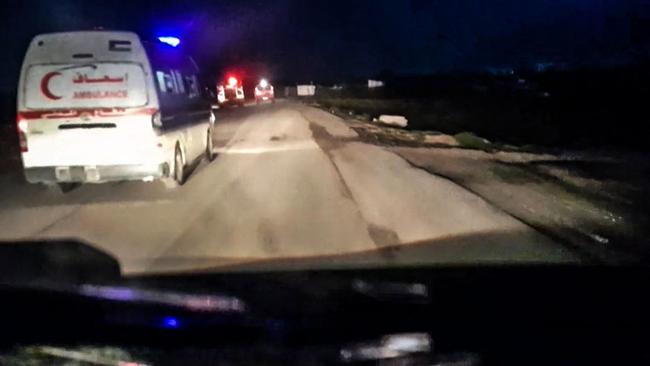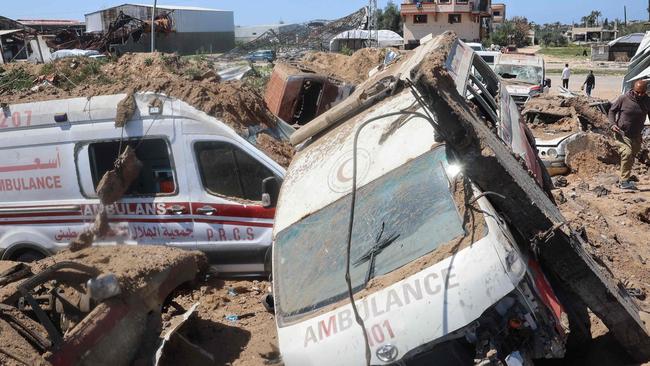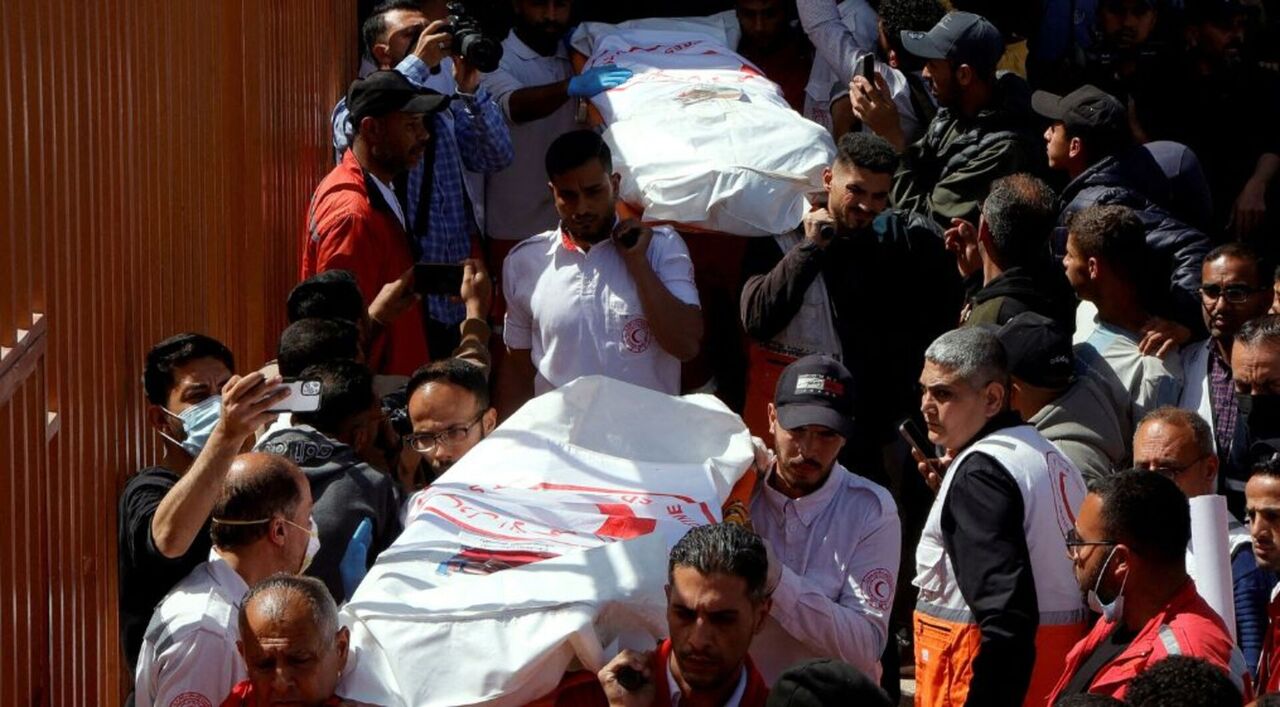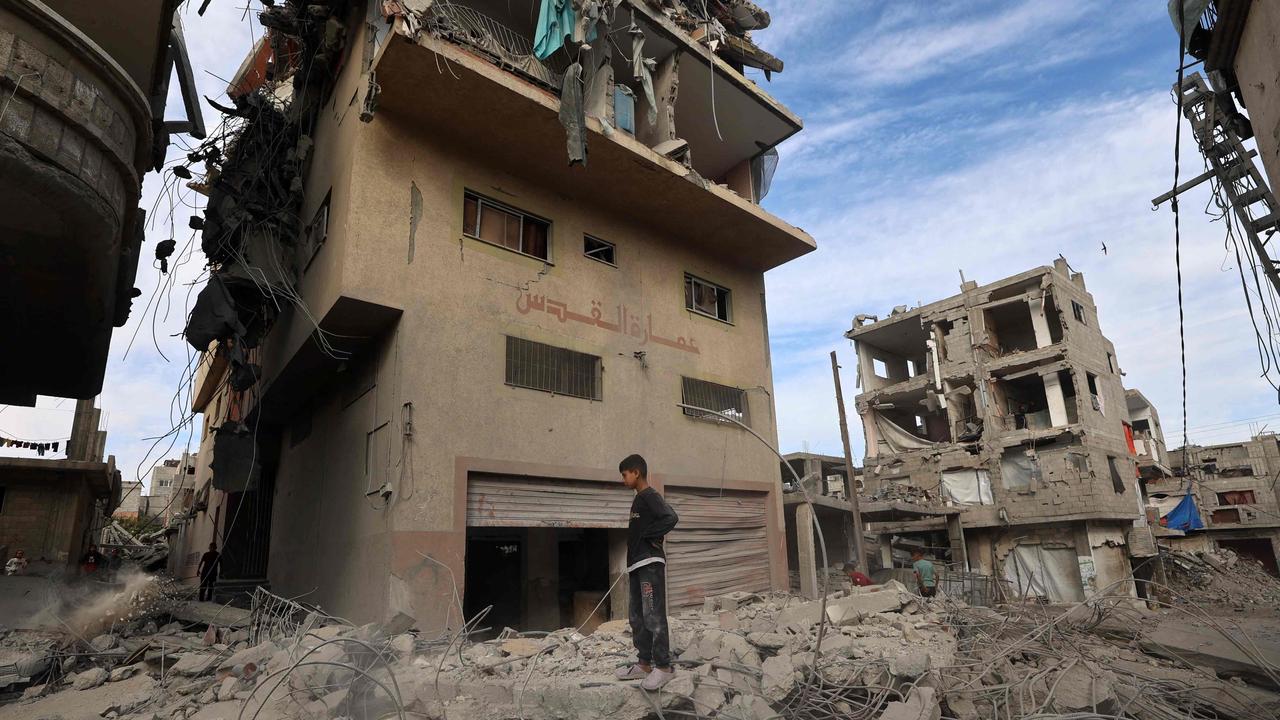Israeli probe finds ‘failures, breaches of orders’ after soldiers kill 15 Gaza aid workers
An investigation by the Israeli military found troops errantly believed they were under threat from an ambulance looking for victims of an air strike and fired a field commander over the deaths.

Israeli soldiers erred in killing 15 Gaza aid workers and violated orders when firing on a United Nations vehicle, the country’s military said Sunday in its report on the incidents.
The military fired the unit’s field commander for giving an inaccurate and incomplete account when debriefed and reprimanded a brigade commander for his responsibility over the troops.
The conclusions were the result of an internal investigation into last month’s shootings, which offered a measure of vindication for Palestinian authorities in Gaza, who said from the outset that those who were killed were legitimate emergency responders travelling in well-marked vehicles.
The incident occurred before dawn on March 23, a few days after Israel ended a two-month ceasefire and began striking targets in Gaza. It began around 3.30am, when an ambulance looking for people injured by an Israeli air strike came under fire in a neighbourhood in the town of Rafah, which sits along the border with Egypt.
When other ambulances and rescue workers arrived to search for the missing crew, they, too, came under fire by Israeli forces. In total, eight Palestine Red Crescent personnel, six emergency rescue workers, and a UN staffer were killed. A surviving medic was released after being briefly detained, while another continues to be held by Israel.
Israeli troops used bulldozers to bury the bodies and vehicles on the side of the road. Several days passed before Israel’s military helped UN personnel locate the bodies, which were in a mass grave by a white electricity pole.
“The examination determined that the fire in the first two incidents resulted from an operational misunderstanding by the troops, who believed they faced a tangible threat from enemy forces,” the Israeli military said.

According to the Israeli military investigation, soldiers fired on the first ambulance, believing incorrectly that it was a Hamas police vehicle rather than an ambulance. A survivor of the initial shooting was detained, and the soldiers reported after a field interrogation that they had a Hamas operative in hand, which was later discovered to be incorrect.
When the second convoy approached, the Israeli commander opened fire, leading the other soldiers to open fire as well. The military said he told investigators that he was wearing night vision goggles and couldn’t see the flashing emergency lights because of the narrow field of view.
When the UN vehicle approached, the same commander fired warning shots, prompting other soldiers to fire at the vehicle, killing its passenger.
Firing on the UN vehicle “involved a breach of orders during a combat setting,” the military said. It said additional details emerged after the troops’ commander reported the event. Israel said it dismissed the officer, the deputy commander of the Golani Reconnaissance Battalion, for providing “an incomplete and inaccurate report during the debrief.” Israel also reprimanded the commanding officer of the 14th Brigade, citing his overall responsibility.
“The examination identified several professional failures, breaches of orders, and a failure to fully report the incident,” the military said.
The probe also found that the emergency workers’ vehicles shouldn’t have been crushed.
Jonathan Whittall, head of the United Nations’ humanitarian office in Gaza and the West Bank, said the Israeli military investigation lacked accountability.

“Without accountability, we risk continuing to watch atrocities unfolding, and the norms designed to protect us all, eroding,” said Whittall, who led the UN mission that recovered the bodies of the aid workers. “Too many civilians, including aid workers, have been killed in Gaza.” The Israeli military’s initial explanation that the emergency workers had sped toward troops with their emergency lights off and that the convoy included at least six Hamas militants began to show cracks almost immediately.
Interviews with the survivor of the attack and a cellphone video shot by one of the medics who was killed made clear their emergency lights had been on, and the one Hamas militant named by Israel’s military wasn’t among the dead. Israel’s military then acknowledged its original account was wrong and launched its probe.
When discussing the results of its probe Sunday, the military stuck by its allegation that six of the 15 killed were Hamas operatives who at the time were working as rescue workers. It didn’t name them or cite any evidence, but said it would release the names later. It said the one name it gave previously had been a misidentification.
Maj. Gen. Yoav Har-Even, the lead Israeli military investigator, said his fact-finding team is investigating more than 470 cases of misconduct stemming from the war in Gaza, more than 50 of which have been passed to top military legal officials for potential criminal investigations, including the killing of the 15 aid workers on March 23.
Israel sent its military into Gaza after the Hamas-led Oct. 7, 2023, attacks that left around 1,200 dead and 251 taken hostage 18 months ago. It has been heavily criticised for the toll of its operations on the civilian population and aid workers. More than 51,000 people have been killed in Gaza, according to Palestinian health authorities, who don’t say how many were militants.
The killing of the Palestinian emergency workers came about a year after Israel killed seven aid workers from the World Central Kitchen relief organisation with drone strikes it found had violated its operating rules. The military dismissed two officers and reprimanded three others in that incident.
Dow Jones



To join the conversation, please log in. Don't have an account? Register
Join the conversation, you are commenting as Logout